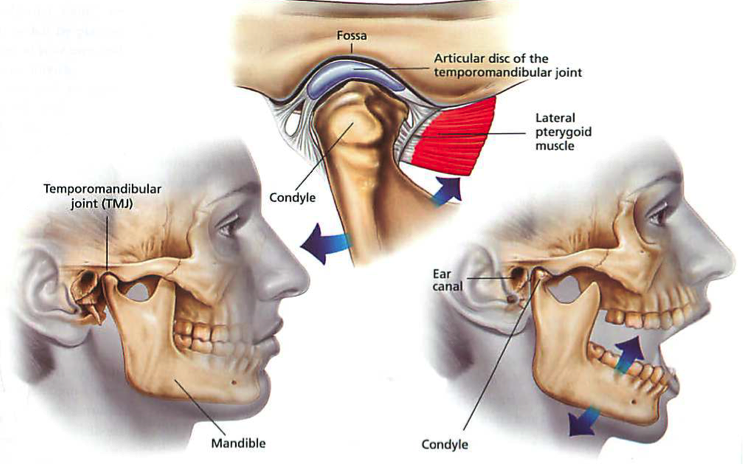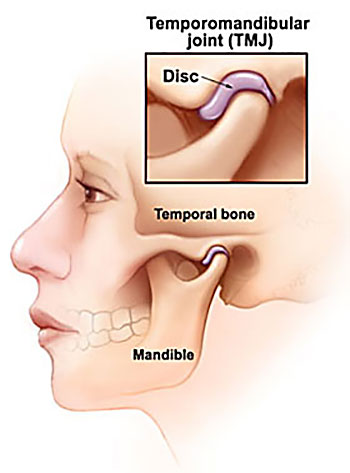
Jaw pain in the form of a temporomandibular joint disorder, also known as “TMD”, is a common injury from a motor vehicle accident. TMD is typically masked by other symptoms, such as neck pain and headaches. TMD symptoms usually appear later than other symptoms and may not be noticed until a few weeks or months after an accident. If you’ve been in a car accident before, you may have experienced symptoms of TMD, but what exactly is TMD?
Temporomandibular Joint Disorder (TMD)
The temporomandibular joint (“TMJ”) is the name of the jaw joint which is located on either side of your head, just in front of your ears. It connects the lower jawbone to the skull. This joint is responsible for controlling jaw movements during chewing, talking and yawning. Pain surrounding the TMJ and general jaw area may mean you have TMD.

TMD is caused by direct or indirect impact to the jaw area. TMD can result even in the absence of direct trauma to the head or jaw. Experiencing the quick motion of acceleration-deceleration in a car accident is enough to dislodge or stretch the jaw joint, resulting in pain. Common types of accidents, amongst many other types, that give rise to TMD are rear-end accidents or accidents that also cause neck pain or whiplash injuries.
Common symptoms of TMD include, but are not limited to:
- pain or tenderness
- limited ability to open your mouth
- clicking, popping or grating in the jaw joint when opening or closing your mouth
- difficulty chewing or eating food
- grinding or clenching of the teeth
- jaw locking or stiffness jaw
- headaches
- ear ringing or ear pain
- tingling or numbness down the arm
Diagnosing and Treating TMD
TMD should be diagnosed by a dentist or dental specialist. Diagnosing TMD typically involves X-rays, MRI scans of the jaw and in-office assessments performed by a dental specialist.
Treatment for TMD depends on the severity of the injury. In some instances, it can be simply managed with pain medication. Depending on the injury, it may also take several months to years in order to fully treat and resolve TMD.
Some common treatment options include, but are not limited to:
- pain medication and muscle relaxants
- splint therapy – a night guard is used to relax the muscle and slowly stabilize the jaw
- physiotherapy OR chiropractor
- botox or trigger point injections to relieve pain
- surgical procedures – in rare cases and used as a last resort option
Treatment for TMD may last a few months or a few years. It can also be extremely costly. However, if treatment is sought within 2 years of the date of the accident, your own insurance should cover all or part of the treatment costs. Any treatment that is required beyond 2 years from the date of the accident, can be claimed for under the future cost of care in your personal injury claim.
How Can a Personal Injury Lawyer Help?
TMD may not only result in pain and discomfort, but it can also impact your quality of life. The experienced personal injury lawyers at Moustarah & Company can refer you to dental professionals who specialize in diagnosing and treating TMD. Our personal injury lawyers will also guide you through the claims process and ensure you are fairly compensated for all of your injuries.
Please note: The information provided on this website does not constitute medical or legal advice and should not be construed as such. The lawyers and staff and Moustarah & Company are not trained medical professionals and do not hold themselves out to be such. If you are suffering from an injury, whether TMD or otherwise, please contact your doctor or medical care provider.
The information provided on this website does not constitute legal advice and should not be construed as such. Moustarah & Company does not guarantee that this information is accurate or up to date. As a result, should you require legal advice, please contact a lawyer.

